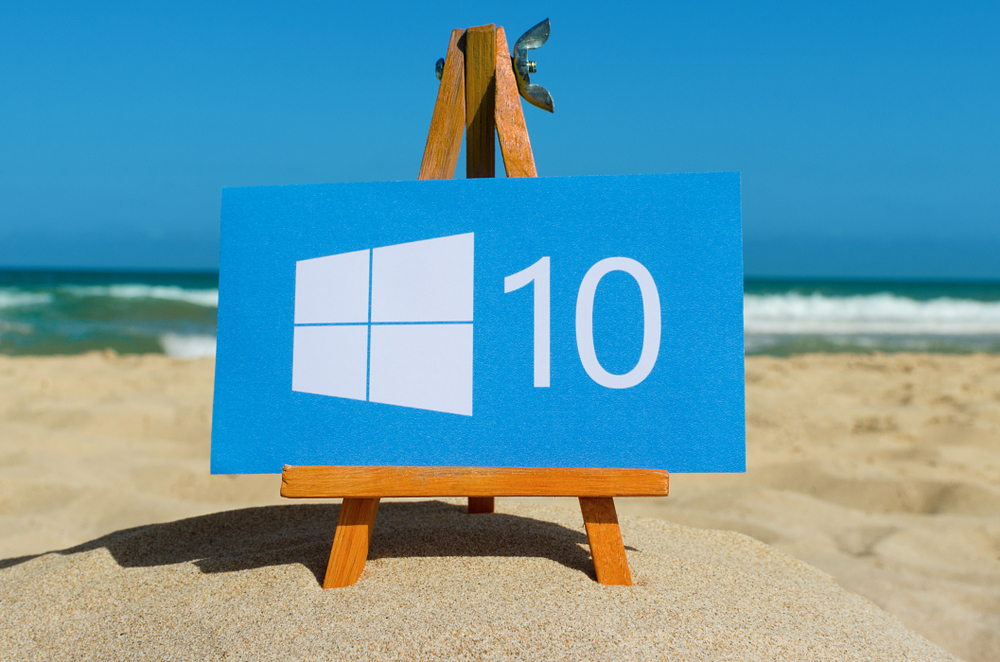Microsoft to roll out Windows 10 'sandbox extension' for Chrome and Firefox
The tool launches an isolated session so enterprise users can browse 'untrusted' websites risk-free


Microsoft has begun testing an in-browser security tool for Chrome and Firefox that serves as a 'sandbox mode' which lets users safely access untrusted websites without fear of infecting their machines.
The Windows Defender Application Guard extension, which already exists for the Edge browser, automatically redirects websites that haven't already been whitelisted to an isolated 'sandbox' environment. This effectively disconnects the browsing session from a user's physical machine and its data and files.
Just as it works on Edge, the extension checks the URL against a list of trusted sites defined by an organisation's enterprise administrator and guides a user to an isolated session. Users can then use this session to freely browse any non-white listed sites without fear of sustaining an infection.
Microsoft is now testing the feature before rolling this out as part of its next major flagship update for Windows 10, dubbed 'April 2019' or 19H1. The extension is currently online live for Windows Insiders, and users will need Windows 10 Pro or Enterprise installations to use the feature when it goes live in Spring.
The browser extension works based on an organisation's group policy, meaning once it's established by a network administrator it can be applied on devices across an entire company. The tool can also be configured by network isolation or application, according to Microsoft's guidelines.
When installed and fully deployed, users will see a Windows Defender Application Guard landing page when they open either Chrome or Firefox. Then, during the normal browsing experience, non-whitelisted URLs will open in a new Application Guard window. Users can also initiate a sandbox session themselves by toggling a switch in the menu settings.
However, the extension won't open this 'sandbox' session in a user's native browser of choice, i.e. Chrome or Firefox, but on an isolated Edge tab, meaning they will be forced into using Edge when browsing untrusted sites if their organisation implements the tool.
Get the ITPro daily newsletter
Sign up today and you will receive a free copy of our Future Focus 2025 report - the leading guidance on AI, cybersecurity and other IT challenges as per 700+ senior executives
The extension is among a suite of security features Microsoft has been developing for enterprise users. Microsoft has also recently extended the idea of 'sandboxing' the user experience to desktop browsing, with this idea making its way into a future feature for Windows 10.
The Windows Sandbox desktop tool, which is currently being tested, will launch enterprise users into a virtual machine-like desktop environment when running suspicious software.
It will allow users to run applications in a clean Windows 10 installation in a windowed application, without having to run a fully-fledged virtual machine, eliminating the risk of opening potentially malicious apps on a work machine.

Keumars Afifi-Sabet is a writer and editor that specialises in public sector, cyber security, and cloud computing. He first joined ITPro as a staff writer in April 2018 and eventually became its Features Editor. Although a regular contributor to other tech sites in the past, these days you will find Keumars on LiveScience, where he runs its Technology section.
-
 Should AI PCs be part of your next hardware refresh?
Should AI PCs be part of your next hardware refresh?AI PCs are fast becoming a business staple and a surefire way to future-proof your business
By Bobby Hellard Published
-
 Westcon-Comstor and Vectra AI launch brace of new channel initiatives
Westcon-Comstor and Vectra AI launch brace of new channel initiativesNews Westcon-Comstor and Vectra AI have announced the launch of two new channel growth initiatives focused on the managed security service provider (MSSP) space and AWS Marketplace.
By Daniel Todd Published
-
 Red teaming comes to the fore as devs tackle AI application flaws
Red teaming comes to the fore as devs tackle AI application flawsNews Only a third of organizations employ adequate testing practices in AI application development, according to new research, prompting calls for increased red teaming to reduce risks.
By Ross Kelly Published
-
 ‘Frontier models are still unable to solve the majority of tasks’: AI might not replace software engineers just yet – OpenAI researchers found leading models and coding tools still lag behind humans on basic tasks
‘Frontier models are still unable to solve the majority of tasks’: AI might not replace software engineers just yet – OpenAI researchers found leading models and coding tools still lag behind humans on basic tasksNews AI might not replace software engineers just yet as new research from OpenAI reveals ongoing weaknesses in the technology.
By George Fitzmaurice Published
-
 Java developers are facing serious productivity issues: Staff turnover, lengthy redeploy times, and a lack of resources are hampering efficiency – but firms are banking on AI tools to plug the gaps
Java developers are facing serious productivity issues: Staff turnover, lengthy redeploy times, and a lack of resources are hampering efficiency – but firms are banking on AI tools to plug the gapsNews Java developers are encountering significant productivity barriers, according to new research, prompting businesses to take drastic measures to boost efficiency.
By Solomon Klappholz Published
-
 Software security debt is spiraling out of control – remediation times have surged 47% in the last five years, and it’s pushing teams to breaking point
Software security debt is spiraling out of control – remediation times have surged 47% in the last five years, and it’s pushing teams to breaking pointNews Software security flaws are taking longer to fix than ever, with remediation times having grown by 47% in the last five years.
By Nicole Kobie Published
-
 Why the CrowdStrike outage was a wakeup call for developer teams
Why the CrowdStrike outage was a wakeup call for developer teamsNews The CrowdStrike outage in 2024 has prompted wholesale changes to software testing and development lifecycle practices, according to new research.
By Solomon Klappholz Published
-
 The ultimate guide to getting your killer app off the ground
The ultimate guide to getting your killer app off the groundIndustry Insight When building software, the process of designing, testing, prototyping, and perfecting your project is never ending
By Jon Spinage Published
-
 Windows 10 will receive only one more update before going EOL
Windows 10 will receive only one more update before going EOLNews Users have been urged to upgrade as Windows 10 22H2 will be the final version before support ends in October 2025
By Ross Kelly Published
-
 How to check if your PC is compatible with Windows 11
How to check if your PC is compatible with Windows 11Tutorials Find out if your PC is ready for the brave new world of Windows 11 with this guide.
By Alan Martin Published